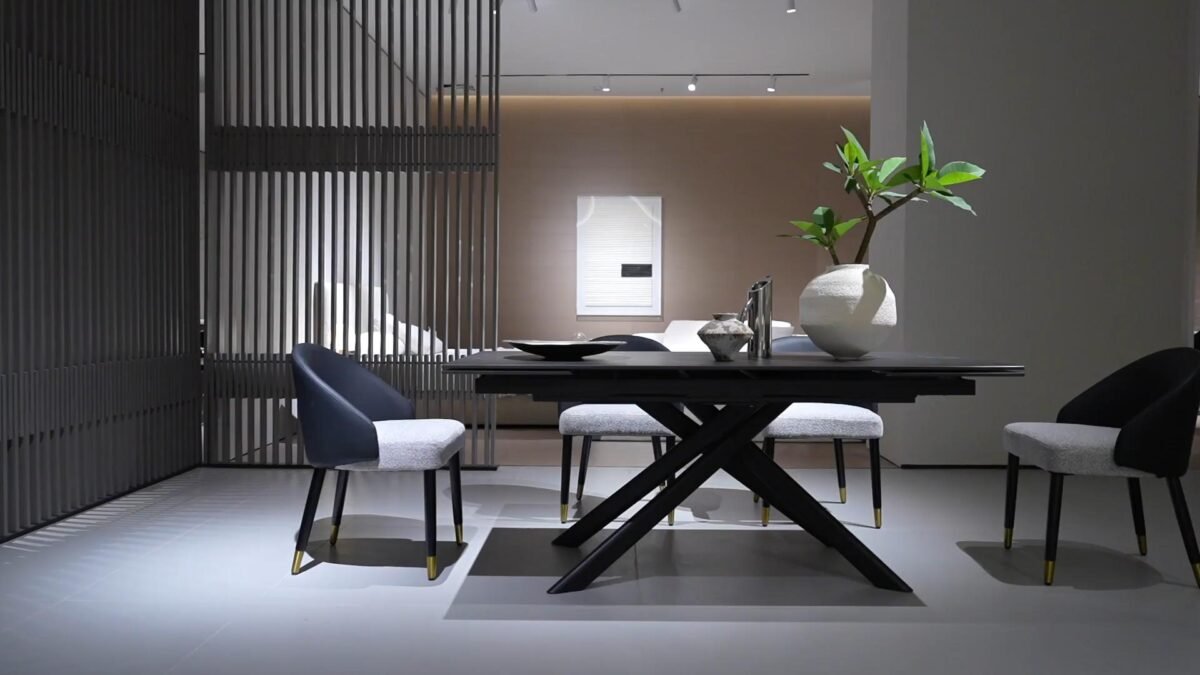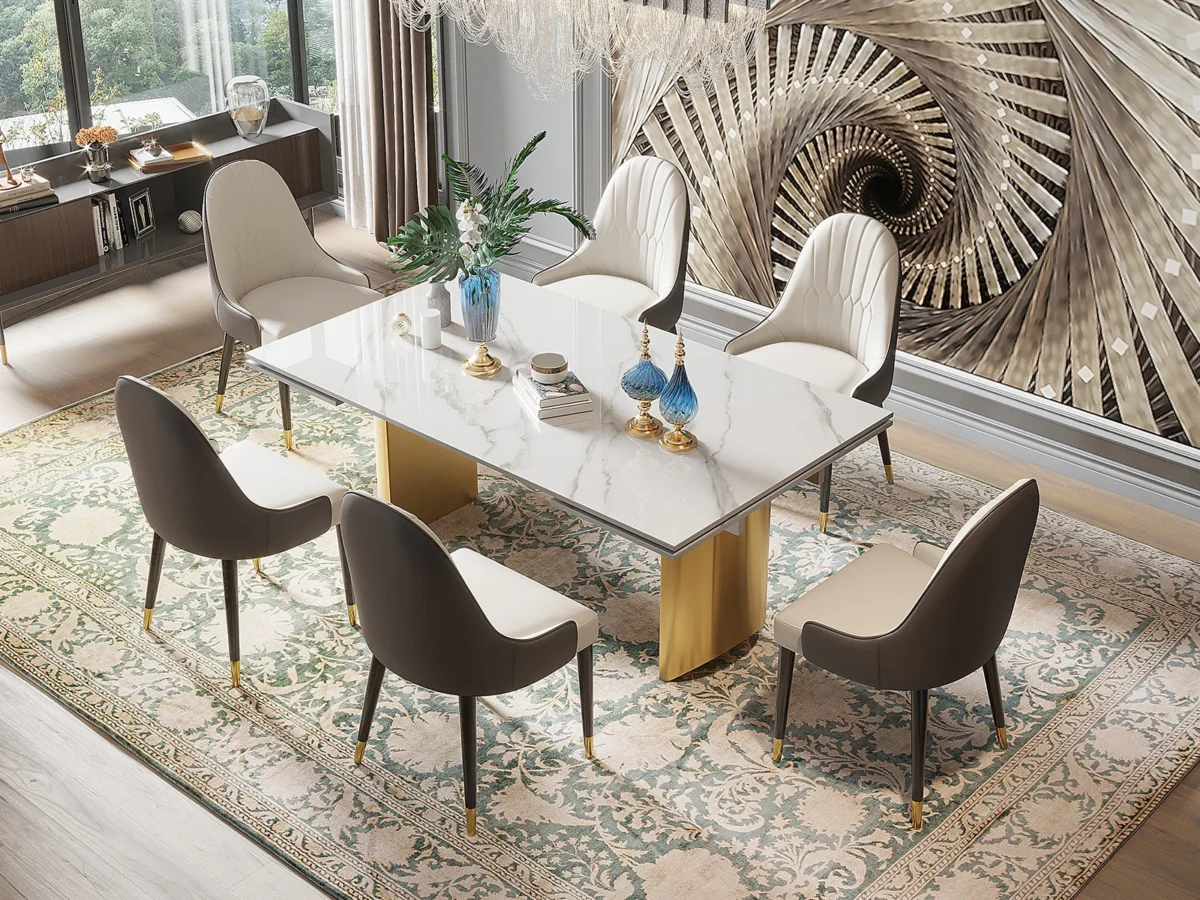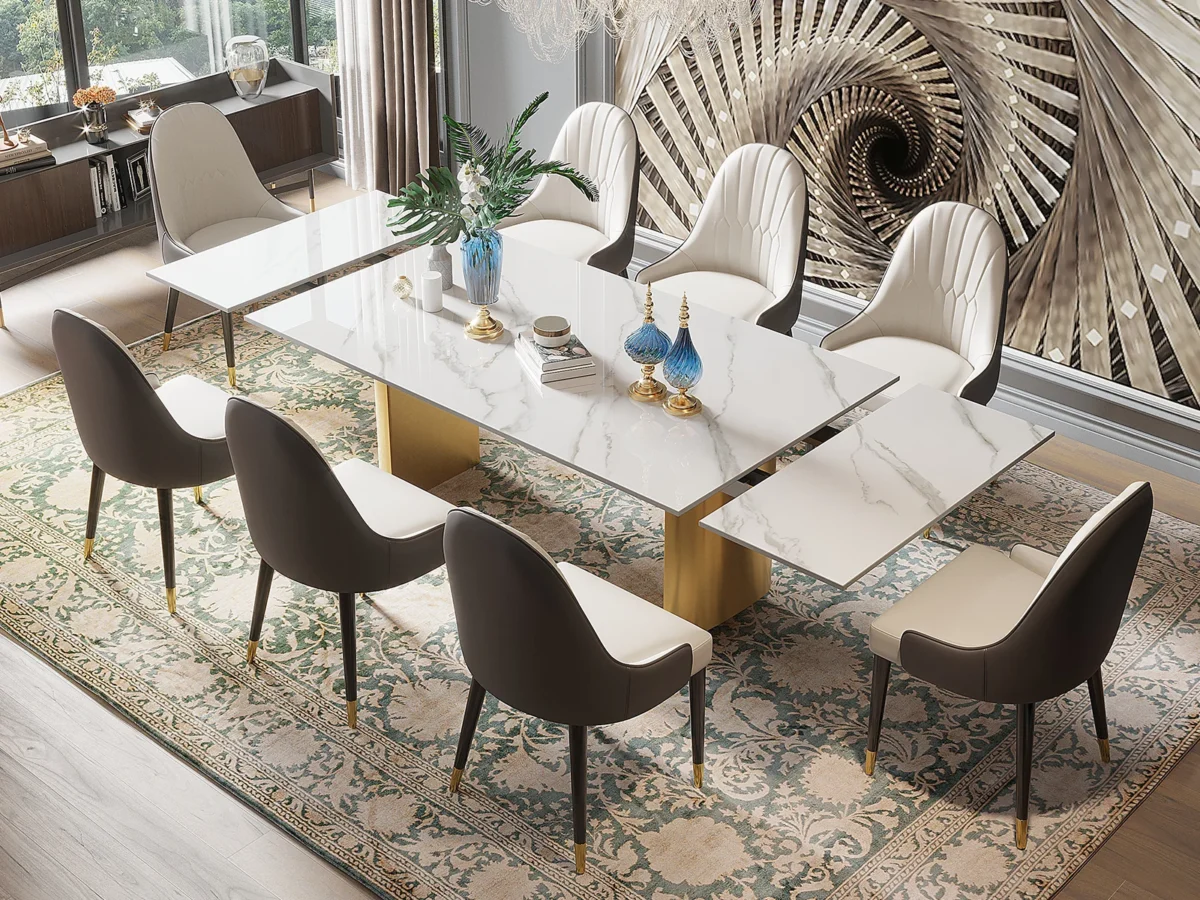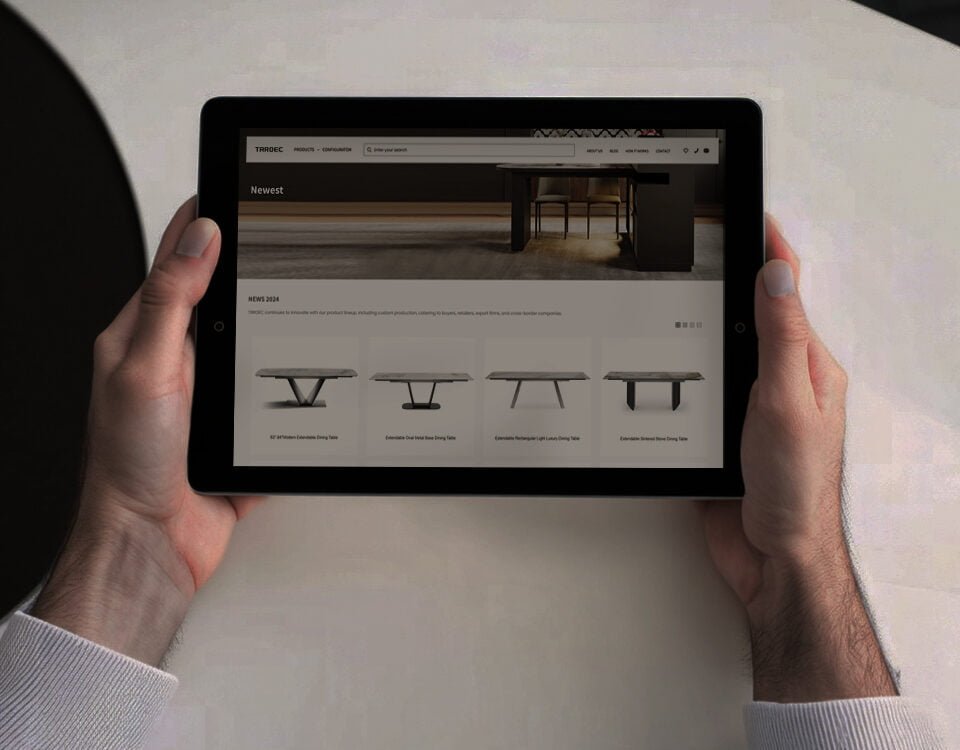1. Introduction
Kitchen furniture forms the backbone of functional and aesthetic spaces in both residential and commercial settings. For businesses such as trading companies, furniture stores, buyers, designers, and renovation companies, understanding the intricacies of kitchen furniture is crucial. This article delves into the various aspects of kitchen furniture, emphasizing extendable dining tables, factory operations, wholesale pricing, and OEM services, providing a comprehensive guide to making informed decisions.

2. Overview of the Kitchen Furniture Market
2.1 Market Trends and Demand
The kitchen furniture market has witnessed significant growth, driven by increasing consumer demand for innovative and versatile designs. As modern lifestyles evolve, there is a rising preference for furniture that combines functionality with aesthetics.
- Growing Urbanization: With more people living in urban areas, there is a higher demand for compact and multifunctional furniture solutions.
- Consumer Preferences: A shift towards personalized and unique designs has led to a surge in customized furniture options.
- Sustainability: Eco-friendly and sustainable materials are gaining popularity, reflecting a global trend towards environmental consciousness.
2.2 Importance of Kitchen Furniture
Kitchen furniture is essential for creating spaces that are not only beautiful but also highly practical. It serves multiple purposes, from providing storage solutions to enhancing the overall ambiance of a kitchen.
- Residential Use: In homes, kitchen furniture enhances functionality and aesthetics, contributing to the overall living experience.
- Commercial Use: In restaurants, hotels, and cafes, well-designed kitchen furniture can improve operational efficiency and customer satisfaction.

3. Benefits of Extendable Dining Tables
3.1 Functional and Design Features
Extendable dining tables are versatile pieces of furniture that offer numerous benefits. They are designed to adapt to various spaces and occasions, making them a popular choice among consumers.
- Space Utilization: These tables can be compact for everyday use and expanded to accommodate more guests during gatherings, making them ideal for both small apartments and large dining areas.
- Flexibility: Extendable tables offer flexibility in terms of usage, allowing for easy reconfiguration of spaces.
- Portability: Many designs are lightweight and easy to move, adding to their convenience.
3.2 Applications
Extendable dining tables are suitable for a wide range of settings, including:
- Homes: Perfect for families who host guests occasionally but need to save space on a daily basis.
- Restaurants and Cafes: Ideal for businesses that need to accommodate varying numbers of customers without sacrificing space efficiency.
- Event Venues: Extendable tables are excellent for venues that host events of different sizes, from small gatherings to large banquets.
3.3 Key Advantages
The main advantages of extendable dining tables include:
- Versatility: Suitable for various occasions and settings.
- Space Efficiency: Maximizes space utilization without compromising on functionality.
- Cost-Effectiveness: Offers a practical solution for both small and large spaces, reducing the need for multiple pieces of furniture.


4. Design and Materials of Extendable Dining Tables
4.1 Design Styles
Extendable dining tables come in a variety of design styles, catering to different tastes and preferences.
- Modern: Sleek and minimalist designs that focus on clean lines and functional features.
- Traditional: Classic designs that emphasize elegance and craftsmanship.
- Hybrid: A blend of modern and traditional elements, offering a unique and versatile aesthetic.
4.2 Material Choices
The materials used in extendable dining tables significantly impact their appearance, durability, and maintenance requirements.
- Wood: Offers a warm and natural look, with options like oak, walnut, and cherry being popular choices. Wood is durable and can be finished in various ways to suit different styles.
- Metal: Provides a contemporary and industrial look, often used in combination with other materials like glass or wood.
- Glass: Adds a touch of elegance and sophistication, often used for table tops in modern designs.
4.3 Quality and Durability
High-quality materials and craftsmanship are essential for ensuring that extendable dining tables are not only beautiful but also long-lasting.
- Construction: Solid construction techniques and quality hardware are crucial for durability and functionality.
- Finishes: Proper finishing protects the furniture from wear and tear, enhancing its longevity.

5. Dining Table Factories and Manufacturing Processes
5.1 Choosing the Right Factory
Selecting the right factory is critical for businesses looking to source high-quality extendable dining tables.
- Quality Certifications: Factories with certifications like ISO 9001 demonstrate a commitment to quality management.
- Production Capacity: Ensuring the factory can handle large orders without compromising on quality is essential.
- Reputation: Researching the factory’s reputation and previous client reviews can provide valuable insights.
5.2 Manufacturing Process
The manufacturing process of extendable dining tables involves several key steps:
- Design: Initial concept and design phase where aesthetics and functionality are balanced.
- Prototyping: Creating prototypes to test and refine the design.
- Material Selection: Choosing the right materials based on durability, appearance, and cost.
- Production: The actual manufacturing, which includes cutting, assembling, finishing, and quality control.
- Quality Control: Rigorous checks at each stage to ensure the final product meets the desired standards.
5.3 Quality Control and Certification
Maintaining high standards through quality control and certification is vital for ensuring customer satisfaction.
- Inspections: Regular inspections during and after production help identify and rectify any issues.
- Testing: Products undergo various tests to ensure they meet safety and durability standards.
- Certification: Obtaining relevant certifications can enhance the credibility and marketability of the products.

6. Wholesale Pricing and Cost Efficiency
6.1 Understanding Wholesale Pricing
Wholesale pricing is a critical factor for businesses looking to maximize their investment in kitchen furniture.
- Price Calculation: Factors influencing wholesale prices include material costs, production efficiency, and order volume.
- Bulk Discounts: Purchasing in bulk often leads to significant cost savings, providing a competitive edge.
6.2 Cost Efficiency
Analyzing the cost efficiency of purchasing extendable dining tables at wholesale prices involves several considerations.
- Cost-Benefit Analysis: Comparing the costs of wholesale purchasing with the potential benefits in terms of savings and profitability.
- Economies of Scale: Leveraging bulk purchasing to reduce per-unit costs.
- Supply Chain Management: Efficient supply chain management can further enhance cost savings by reducing transportation and storage costs.
6.3 Competitive Advantage
Offering competitively priced, high-quality extendable dining tables can provide businesses with a significant market advantage.
- Market Positioning: Positioning the business as a provider of affordable, high-quality furniture can attract a larger customer base.
- Customer Loyalty: Competitive pricing combined with quality can lead to increased customer loyalty and repeat business.

7. Importance of OEM Services
7.1 Definition and Role of OEM
OEM (Original Equipment Manufacturer) services allow businesses to offer customized products under their own brand names.
- Customization: OEM services enable businesses to design and create unique products that reflect their brand identity.
- Brand Recognition: Custom-branded products can enhance brand recognition and differentiation in the market.
7.2 Application of OEM Services
In the kitchen furniture industry, OEM services are particularly useful for businesses looking to stand out.
- Unique Designs: OEM services allow for the creation of unique designs that cater to specific customer preferences.
- Exclusive Products: Offering exclusive products can attract discerning customers and enhance brand prestige.
7.3 Advantages of Working with OEMs
Collaborating with OEMs offers several benefits:
- Product Differentiation: OEM services help businesses differentiate their products in a competitive market.
- Brand Loyalty: Custom-branded products can foster brand loyalty and customer retention.
- Market Flexibility: OEM services provide flexibility to adapt to changing market trends and customer demands.

8. How to Choose the Right Supplier
8.1 Key Factors to Consider
Selecting the right supplier involves evaluating several critical factors:
- Track Record: Assessing the supplier’s history and reputation in the market.
- Product Quality: Ensuring the supplier can consistently deliver high-quality products.
- Reliability: The supplier’s ability to meet deadlines and handle large orders.
8.2 Building Long-Term Relationships
Establishing strong, long-term relationships with suppliers can lead to better collaboration and more favorable terms.
- Communication: Open and transparent communication is key to building trust and understanding.
- Mutual Benefits: Focusing on mutual benefits can create a win-win situation for both parties.
- Regular Evaluations: Regularly evaluating the supplier’s performance helps maintain high standards and address any issues promptly.
8.3 Case Studies and Success Stories
Examining case studies and success stories can provide valuable insights into successful supplier relationships.
- Examples of Successful Partnerships: Highlighting examples of businesses that have benefited from strong supplier relationships.
- Lessons Learned: Identifying key takeaways from these examples can guide businesses in their supplier selection process.
9. Future Trends and Innovations
9.1 Smart Furniture
The integration of technology into furniture design is a growing trend, offering enhanced functionality and convenience.
- Smart Features: Examples include adjustable height mechanisms, built-in charging ports, and integrated lighting.
- User Experience: Smart furniture enhances the user experience by offering personalized and adaptable solutions.
9.2 Sustainable Materials
The use of eco-friendly and sustainable materials is becoming increasingly important in the kitchen furniture industry.
- Eco-Friendly Options: Materials like bamboo, reclaimed wood, and recycled metals are gaining popularity.
- Environmental Impact: Choosing sustainable materials reduces the environmental impact of furniture production.
9.3 Design Trends
Future design trends are likely to emphasize minimalism, multifunctionality, and sustainability.
- Minimalism: Clean lines and uncluttered spaces continue to be popular.
- Multifunctionality: Furniture that serves multiple purposes will be in high demand.
- Sustainability: Eco-conscious designs that prioritize sustainability will attract environmentally aware consumers.
10. Conclusion
In conclusion, kitchen furniture, particularly extendable dining tables, offers immense potential for businesses looking to cater to the evolving needs of their customers. By partnering with reliable dining table factories, leveraging wholesale prices, and utilizing OEM services, businesses can achieve significant growth and success. Understanding market trends, choosing the right materials, and maintaining high-quality standards are essential for thriving in the competitive kitchen furniture market.




